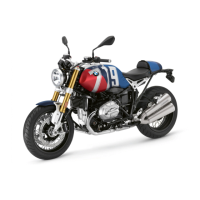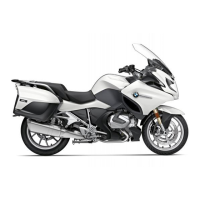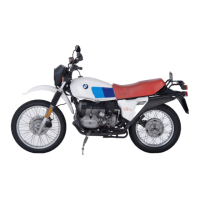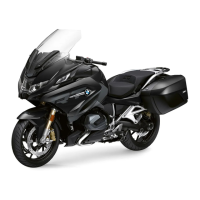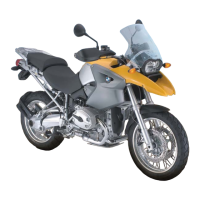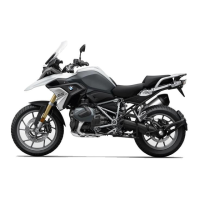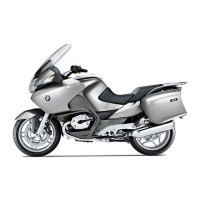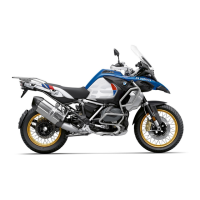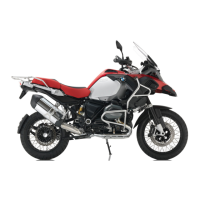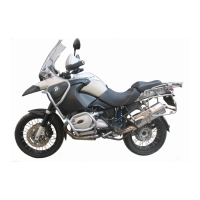General instructions
To find out more about engineer-
ing go to:
bmw-motorrad.com/techno-
logy
Antilock Brake System
(ABS)
How does ABS work?
The amount of braking force that
can be transferred to the road
depends on factors that include
the coefficient of friction of the
road surface. Loose stones, ice
and snow or a wet road all have
much lower coefficients of friction
than a clean and dry asphalt sur-
face. The lower the coefficient of
friction, the longer the stopping
distance.
If the rider increases the brake
pressure to the extent that
the brake force exceeds the
maximum transferable limit,
the wheels start to lock and
the vehicle loses its directional
stability; a fall is imminent.
Before this situation can occur,
ABS intervenes and adapts
braking pressure to the maximum
transferable braking force. The
wheels continue to turn and
the driving stability is retained
irrespective of the road condition.
What are the effects of
surface irregularities?
Surface irregularities can cause
the wheels to lose contact tem-
porarily with the road surface. If
this happens the braking force
that can be transmitted to the
road can drop to zero. If the
brakes are applied under these
circumstances the ABS has to
reduce braking force to ensure
that directional stability is main-
tained when the wheels regain
contact with the road surface.
At this instant the ABS must
assume an extremely low coef-
ficient of friction, so that the
wheels will continue to rotate un-
der all imaginable circumstances,
because this is the precondition
for ensuring directional stability.
As soon as it registers the actual
circumstances, the system re-
acts instantly and adjusts braking
force accordingly to achieve op-
timum braking.
Rear wheel lift
Under very severe and
sudden deceleration, however,
it is possible that the
BMW Motorrad ABS will be
unable to prevent the rear wheel
from lifting clear of the ground.
If this happens the outcome can
be a highsiding situation in which
the motorcycle can flip over.
7
76
z
Engineering details
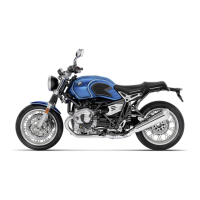
